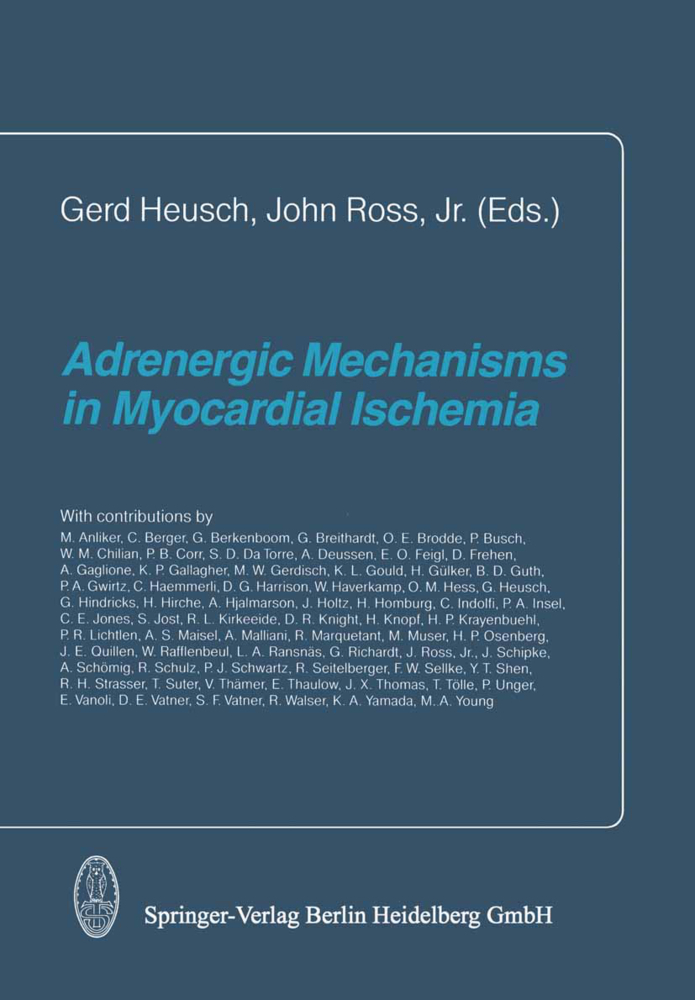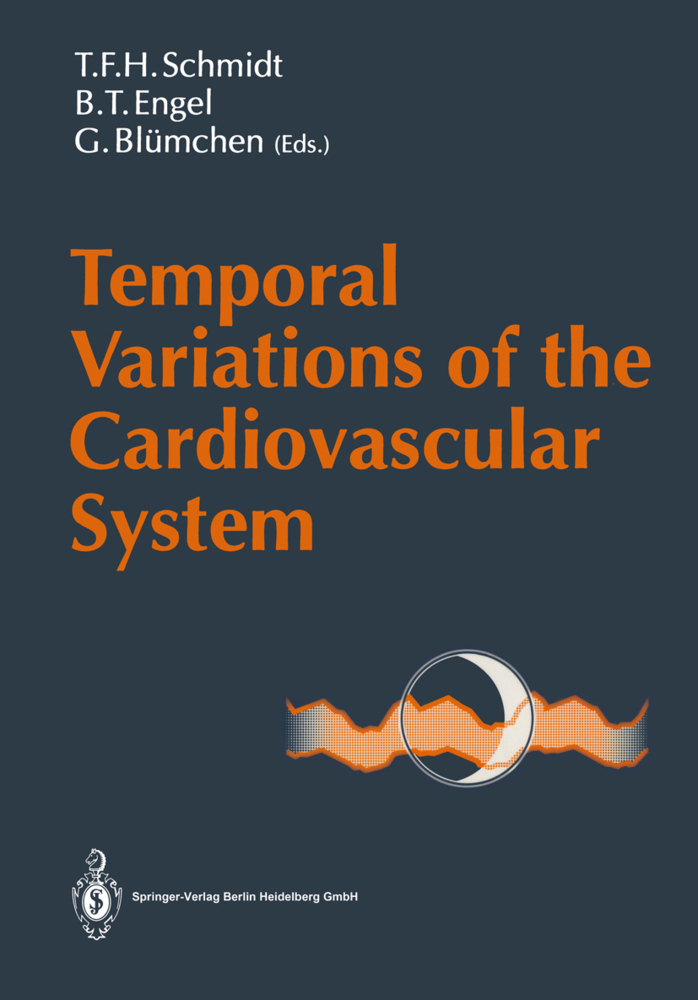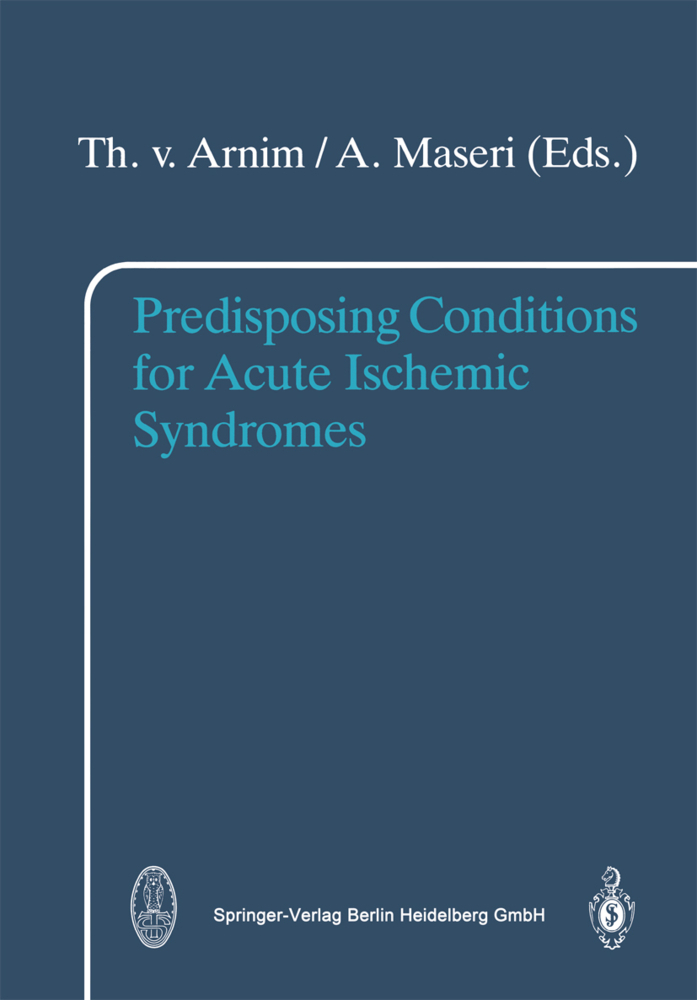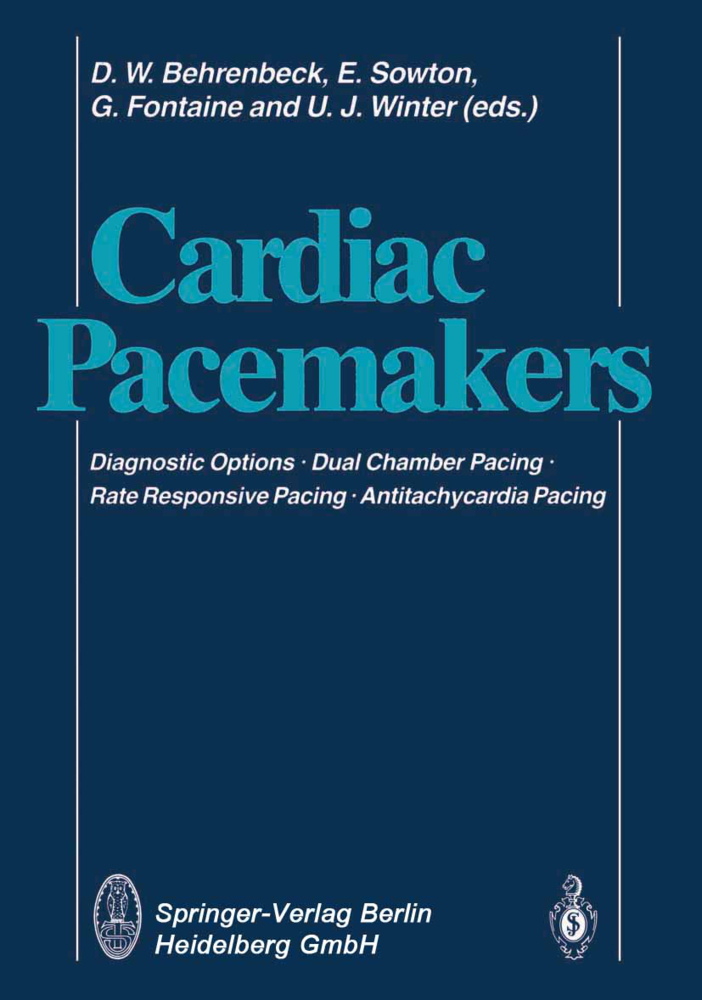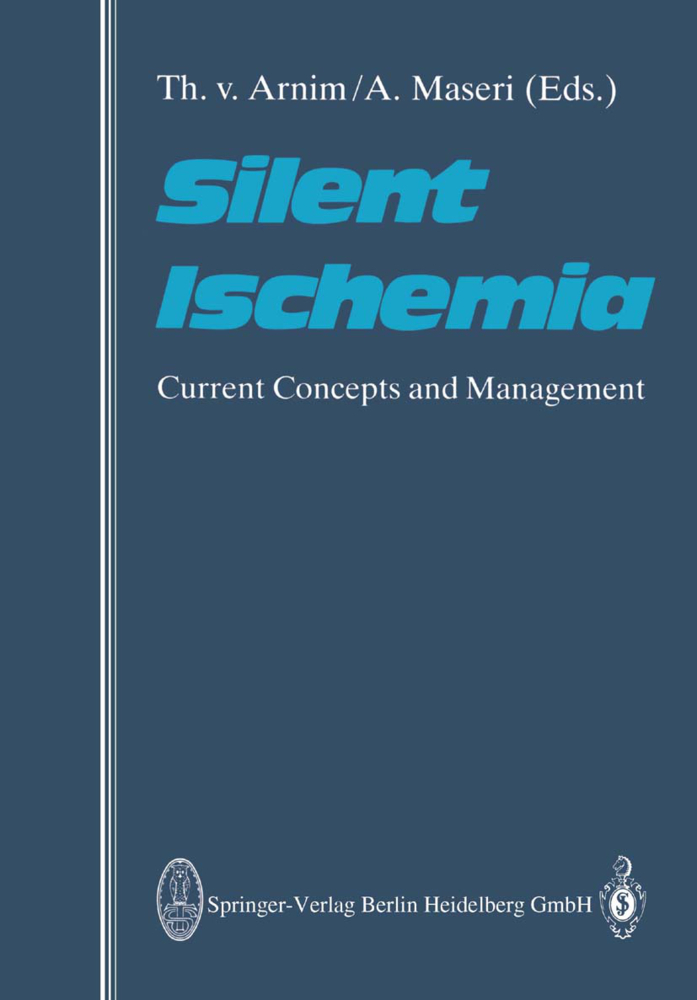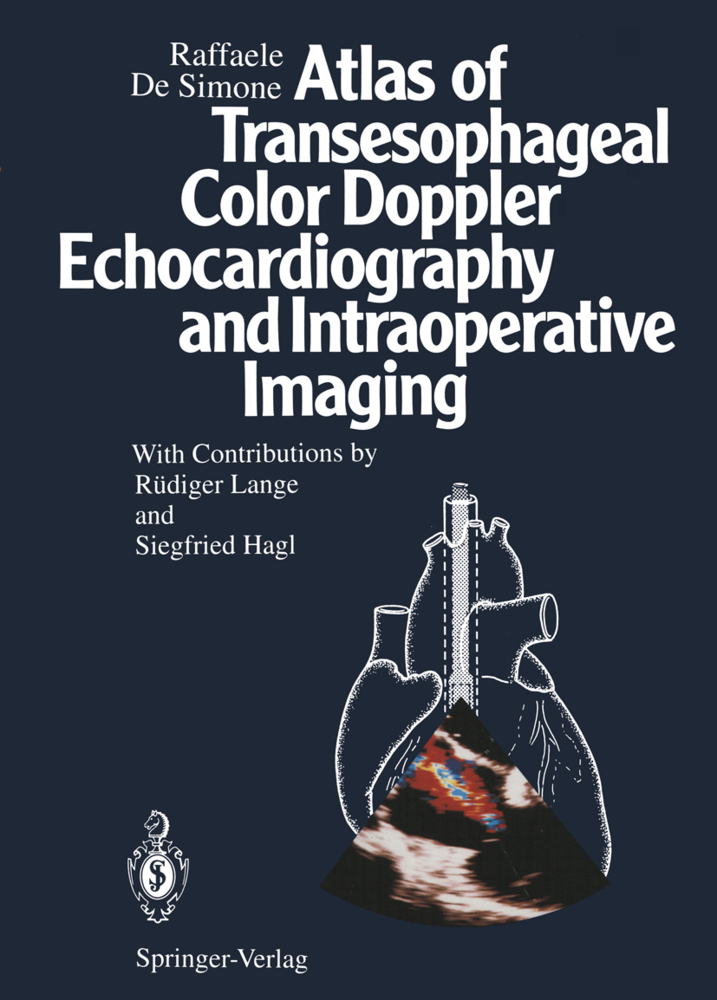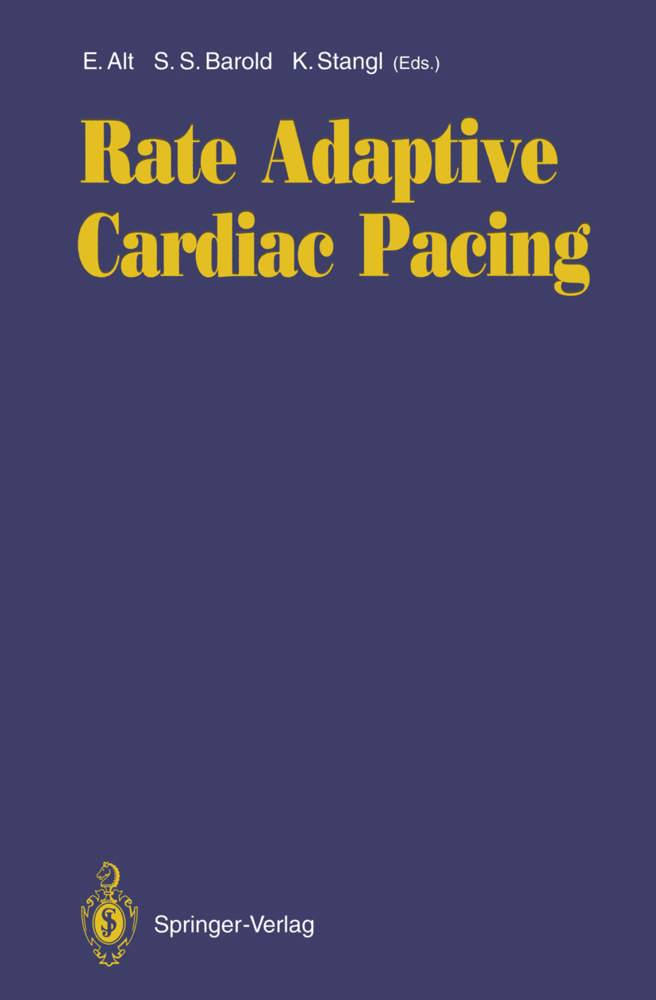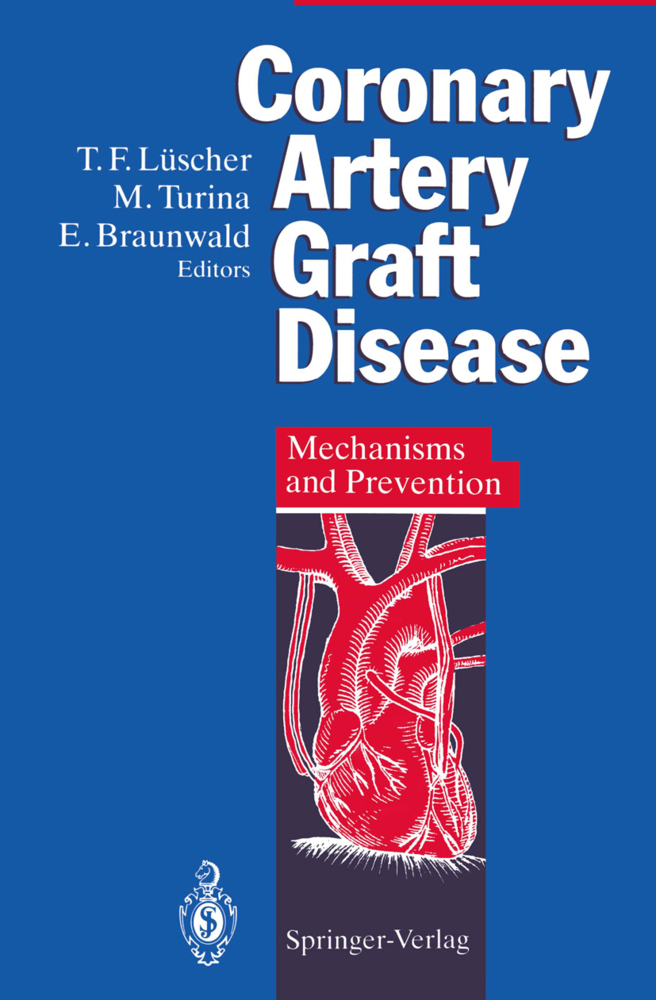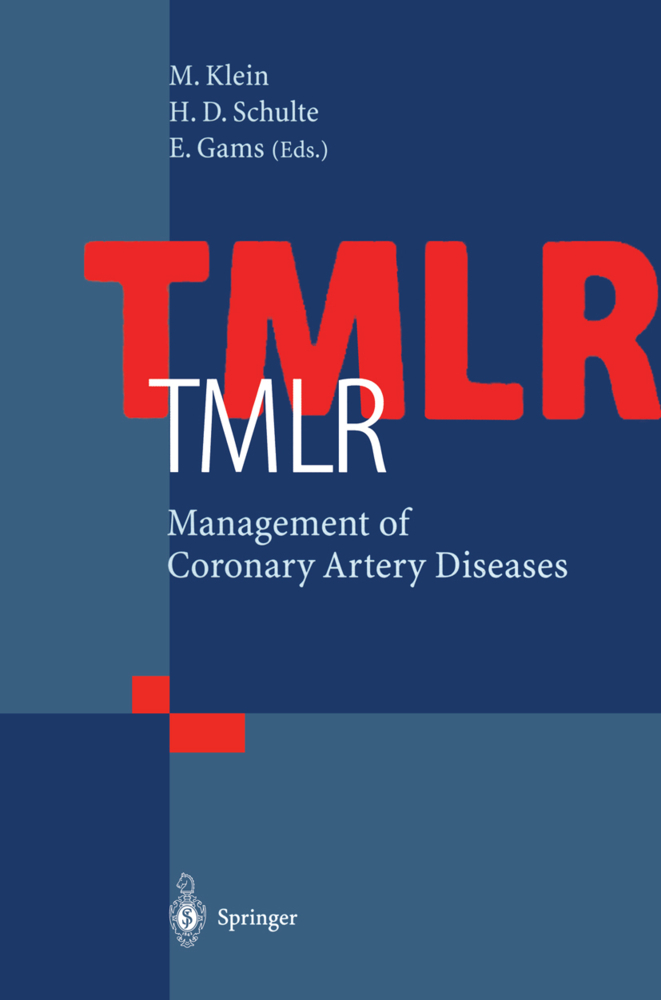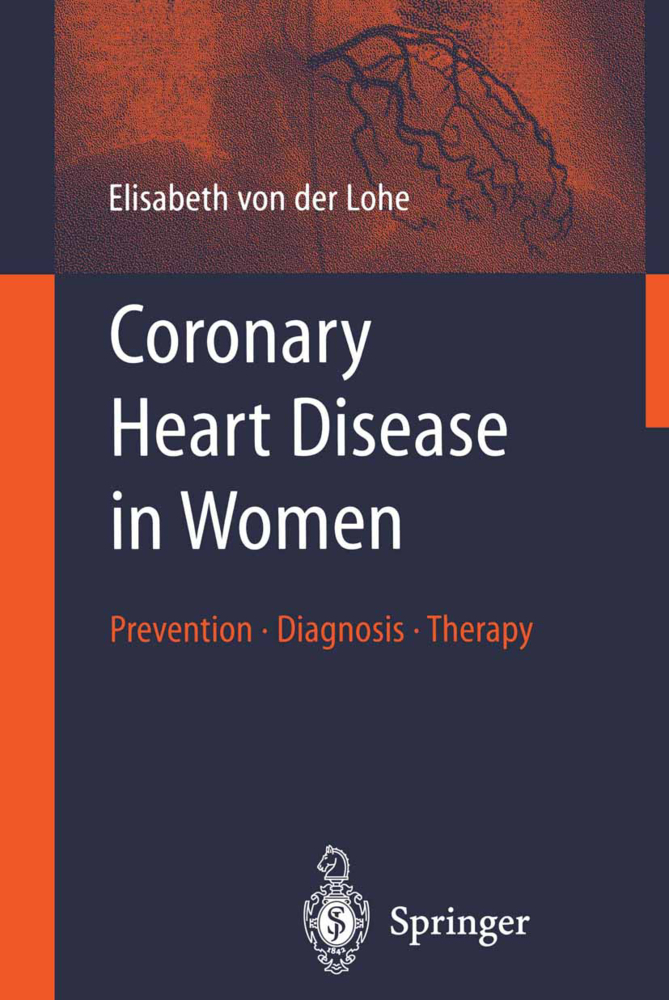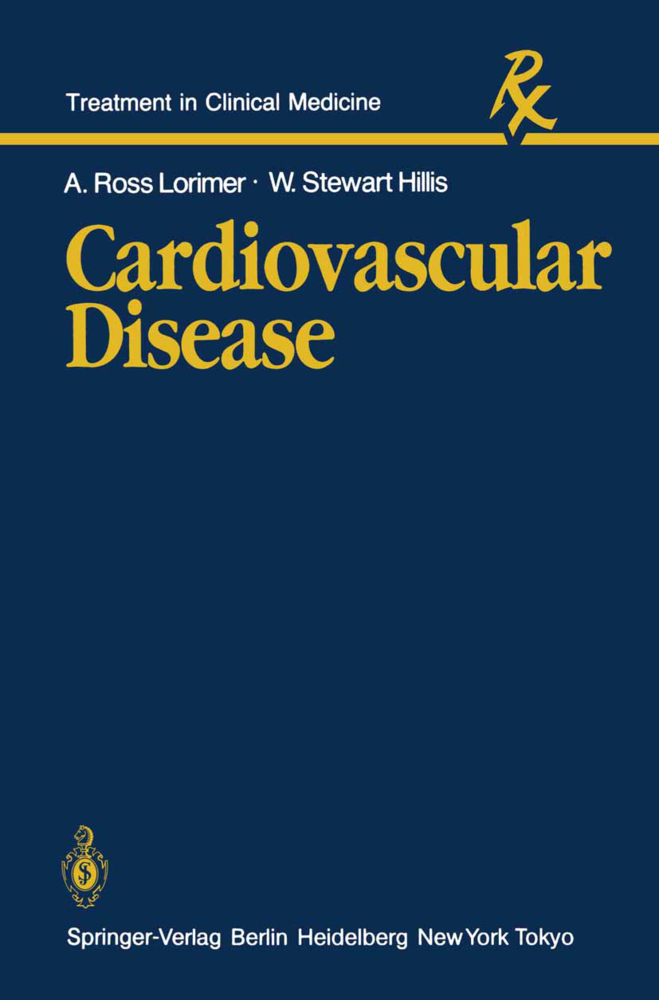Adrenergic Mechanisms in Myocardial Ischemia
Adrenergic Mechanisms in Myocardial Ischemia
Stress-induced myocardial ischemia is a frequent manifestation of coronary heart disease, and sympathetic activation is an important precipitating and aggravating factor in such stress induced ischemia. However, the complex interplay between the sympathetic initiation of myocardial ischemia, ischemia-induced alterations in sympathetic neurotransmission, as well as changes in adrenoceptor density and post-receptor signal transduction that can occur during ischemia remains incompletely understood. Not only the activation of myocardial fJ adrenoceptors, but also the activation of coronary IX-adrenoceptors can contribute to myocar dial ischemia. However, the role of fJ-adrenoceptor-mediated increases in contractility relative to heart rate in the initiation of ischemia is not clear, and the significance of IX-adrenoceptor mediated changes in coronary vasomotor tone, as well as the responsible IX-adrenoceptor subtypes are highly controversial. Malignant arrhythmias may be triggered by both IX- and fJ-adrenergic mechanisms. Current research in this field is focussed not only on the underlying physiological and pathophysiological mechanisms, but also on clinical treatment strategies, e. g. , by fJ-blockade, IX-blockade, bradycardic agents and calcium antagonists. Recent findings were presented and future research directions discussed during the 61" International Titisee Conference, held at the Schwarzwald-Hotel, Titisee, March 29-31, 1990 under the sponsorship of the Boehringer Ingelheim Foundation. Dr. Hasso Schroeder and Dr. Hermann Frohlich deserve special thanks for their generous support and pleasant organization of the meeting. The publication of the proceedings has been made possible by grants from Astra Chemicals, Bayer, ICI, Dr. Karl Thomae, and Upjohn.
Cardiac Sympathetic Activity in Myocardial Ischemia: Release and Effects of Noradrenaline
Modulation of ?-Adrenergic Receptors and their Intracellular Coupling in the Ischemic Heart
?-Adrenergic Receptors and the Gs Protein in Myocardial Ischemia and Injury
?- and ?-Adrenoceptor-Agonists and -Antagonists in Chronic Heart Failure
Supersensitivity of the Adenylyl Cyclase System in Acute Myocardial Ischemia: Evaluation of three Independent Mechanisms
II. Adrenergic Coronary Vasomotion
?-Adrenoceptor Subtypes in the Coronary Circulation
?- and ?-Adrenergic Control of Large Coronary Arteries in Conscious Calves
Adrenergic Vasomotion in the Coronary Microcirculation
Neurohumoral Regulation of Coronary Collateral Vasomotor Tone
?-Adrenergic Regulation of Myocardial Performance in the Exercising Dog: Evidence for Both Presynaptic ?1 and ?2 -Adrenoceptors
III. Adrenergic Coronary Vasoconstriction and Blood Flow Distribution in Ischemic Myocardium
Transmural Steal with Isoproterenol and Exercise in Poststenotic Myocardium
Mechanisms of Benefit in the Ischemic Myocardium due to Heart Rate Reduction
Adrenergic Control of Transmural Coronary Blood Flow
?1-Adrenergic Coronary Constriction during Exercise and Ischemia
Contribution of Postsynaptic ?2-Adrenoceptors to Reflex Sympathetic Constriction of Stenotic Coronary Vessels
?2-Adrenergic Coronary Constriction in Ischemic Myocardium during Exercise
Prevention of ?-Adrenergic Coronary Constriction by Calcium-Antagonists
Effects of Selective Cardiac Denervation on Collateral Blood Flow after CoronaryArtery Occlusion in Conscious Dogs
IV. Sympathetic Activation in Myocardial Ischemia
Cardiocardiac Excitatory Reflexes during Myocardial Ischemia
Pain and Myocardial Ischemia: the Role of Sympathetic Activation
No Impairment of Sympathetic Neurotransmission in Stunned Myocardium
V. Adrenergic Mechanisms Triggering Arrhythmias during Myocardial Ischemia
Does Noradrenaline Influence the Extracellular Accumulation of Potassium, Sodium, Calcium, and Hydrogen Ions ([K+]e, [Na+]e, [Ca2+]e, [H+]e) during Global Ischemia in Isolated Rat Heart?
Effects of ?-Blockade on the Incidence of Ventricular Tachyarrhythmias during Acute Myocardial Ischemia: Experimental Findings and Clinical Implications
Sympathetic-Parasympathetic Interaction and Sudden Death
VI. Adrenergic Mechanisms in Clinical Coronary Heart Disease
Heart Rate and ?-Adrenergic Mechanisms in Acute Myocardial Infarction
Coronary Vasomotor Tone in Large Epicardial Coronary Arteries with Special Emphasis on ?-Adrenergic Vasomotion, Effects of ?-Blockade
The Poststenotic Vessel Segment during Dynamic Exercise: Effect of Oral Isosorbid-dinitrate
?-Adrenergic Coronary Constriction in Effort Angina.
I. Cardiac Sympathetic Innervation, Neurotransmission, Adrenoceptors and Signal Transduction in Myocardial Ischemia
Topical Organization of the Cardiac Sympathetic Nervous SystemCardiac Sympathetic Activity in Myocardial Ischemia: Release and Effects of Noradrenaline
Modulation of ?-Adrenergic Receptors and their Intracellular Coupling in the Ischemic Heart
?-Adrenergic Receptors and the Gs Protein in Myocardial Ischemia and Injury
?- and ?-Adrenoceptor-Agonists and -Antagonists in Chronic Heart Failure
Supersensitivity of the Adenylyl Cyclase System in Acute Myocardial Ischemia: Evaluation of three Independent Mechanisms
II. Adrenergic Coronary Vasomotion
?-Adrenoceptor Subtypes in the Coronary Circulation
?- and ?-Adrenergic Control of Large Coronary Arteries in Conscious Calves
Adrenergic Vasomotion in the Coronary Microcirculation
Neurohumoral Regulation of Coronary Collateral Vasomotor Tone
?-Adrenergic Regulation of Myocardial Performance in the Exercising Dog: Evidence for Both Presynaptic ?1 and ?2 -Adrenoceptors
III. Adrenergic Coronary Vasoconstriction and Blood Flow Distribution in Ischemic Myocardium
Transmural Steal with Isoproterenol and Exercise in Poststenotic Myocardium
Mechanisms of Benefit in the Ischemic Myocardium due to Heart Rate Reduction
Adrenergic Control of Transmural Coronary Blood Flow
?1-Adrenergic Coronary Constriction during Exercise and Ischemia
Contribution of Postsynaptic ?2-Adrenoceptors to Reflex Sympathetic Constriction of Stenotic Coronary Vessels
?2-Adrenergic Coronary Constriction in Ischemic Myocardium during Exercise
Prevention of ?-Adrenergic Coronary Constriction by Calcium-Antagonists
Effects of Selective Cardiac Denervation on Collateral Blood Flow after CoronaryArtery Occlusion in Conscious Dogs
IV. Sympathetic Activation in Myocardial Ischemia
Cardiocardiac Excitatory Reflexes during Myocardial Ischemia
Pain and Myocardial Ischemia: the Role of Sympathetic Activation
No Impairment of Sympathetic Neurotransmission in Stunned Myocardium
V. Adrenergic Mechanisms Triggering Arrhythmias during Myocardial Ischemia
Does Noradrenaline Influence the Extracellular Accumulation of Potassium, Sodium, Calcium, and Hydrogen Ions ([K+]e, [Na+]e, [Ca2+]e, [H+]e) during Global Ischemia in Isolated Rat Heart?
Effects of ?-Blockade on the Incidence of Ventricular Tachyarrhythmias during Acute Myocardial Ischemia: Experimental Findings and Clinical Implications
Sympathetic-Parasympathetic Interaction and Sudden Death
VI. Adrenergic Mechanisms in Clinical Coronary Heart Disease
Heart Rate and ?-Adrenergic Mechanisms in Acute Myocardial Infarction
Coronary Vasomotor Tone in Large Epicardial Coronary Arteries with Special Emphasis on ?-Adrenergic Vasomotion, Effects of ?-Blockade
The Poststenotic Vessel Segment during Dynamic Exercise: Effect of Oral Isosorbid-dinitrate
?-Adrenergic Coronary Constriction in Effort Angina.
| ISBN | 9783662110409 |
|---|---|
| Artikelnummer | 9783662110409 |
| Medientyp | Buch |
| Copyrightjahr | 2013 |
| Verlag | Steinkopff |
| Umfang | 376 Seiten |
| Abbildungen | IX, 376 p. 49 illus. |
| Sprache | Englisch |

